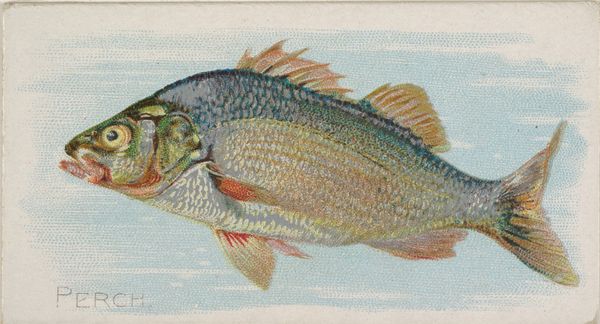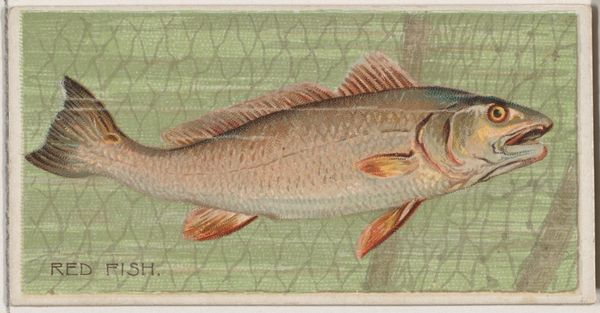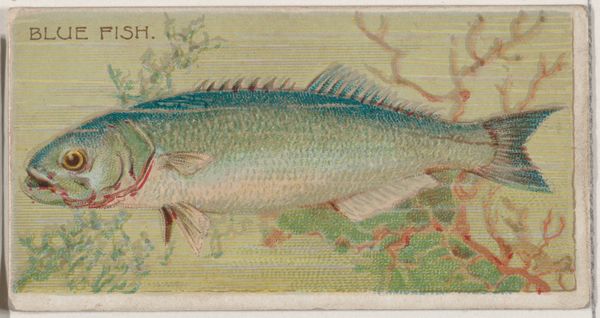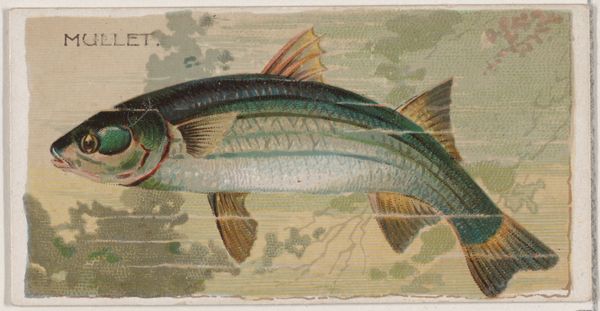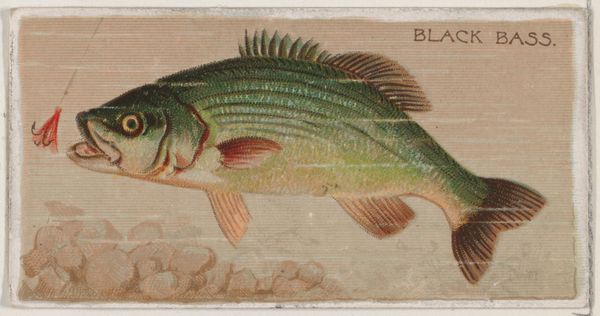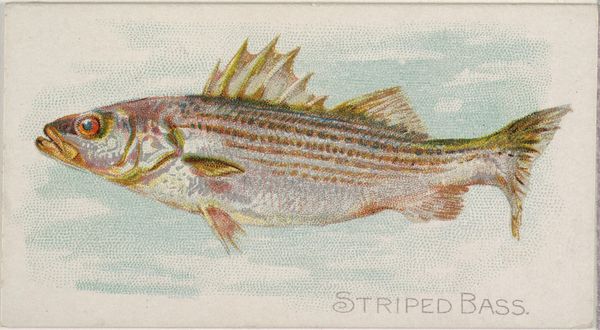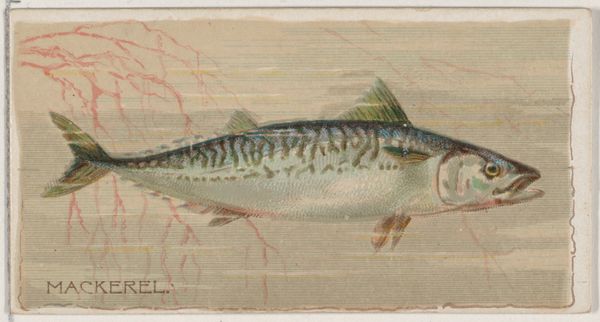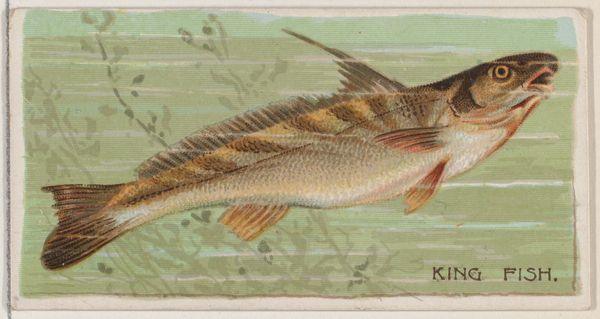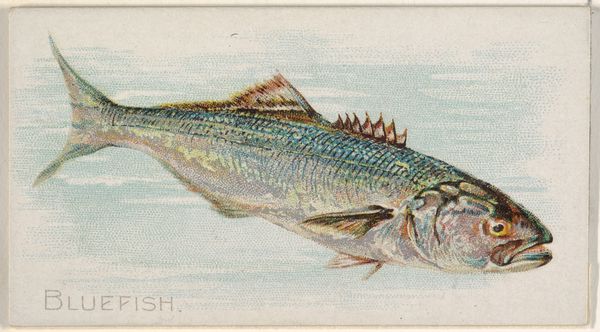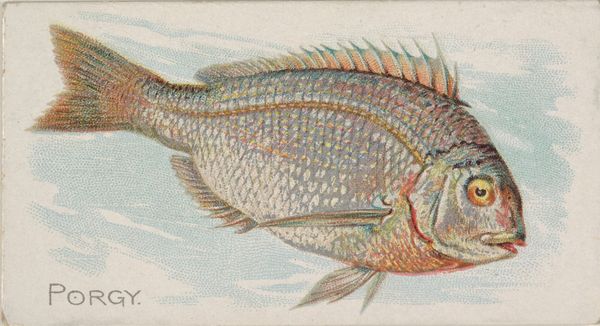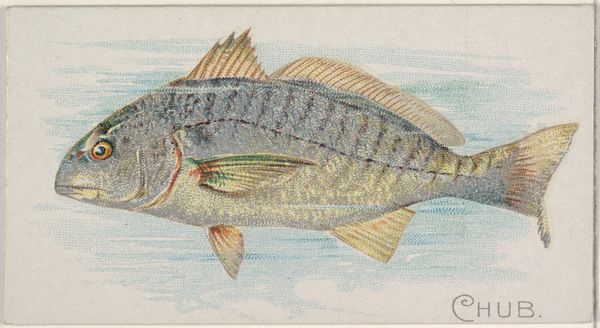
Striped Bass, from the series Fishers and Fish (N74) for Duke brand cigarettes 1888
0:00
0:00
lithograph, print
#
fish
#
lithograph
# print
#
coloured pencil
Dimensions: Sheet: 1 7/16 × 2 3/4 in. (3.6 × 7 cm)
Copyright: Public Domain
Curator: This captivating print from 1888 is titled "Striped Bass, from the series Fishers and Fish (N74) for Duke brand cigarettes." It's attributed to Knapp & Company, and the medium combines lithography with coloured pencil and drawing techniques. Editor: The rendering is beautiful; even on a small scale, it conveys a remarkable sense of liveliness, though, of course, tinged with an archaic flavor! Its colours and composition certainly draw attention to the subject matter. It's almost jarring, though, considering it was printed for something as ultimately inconsequential as a cigarette card. Curator: That very juxtaposition is crucial to consider! The rise of industrial capitalism in the late 19th century led to the mass production of goods like cigarettes. These cards, inserts intended to stiffen packaging, reflect evolving ideas about consumption and the commodification of leisure. Furthermore, consider the intended audience – largely white, male smokers. What ideological messages were subtly conveyed through this seemingly innocent depiction of nature? Editor: Right, these cards weren’t just advertisements. They created associations. Fish imagery, for example, carries heavy symbolic baggage. Think of the ancient Christian symbol of the fish or the cultural significance attached to particular species. Were they drawing on those pre-existing symbolic frameworks to add extra layers of meaning or to implicitly tie Duke cigarettes to something inherently good or powerful? Curator: Precisely. Also, the artistic style reflects a growing interest in Japonisme in Western art at the time, visible in its simplified forms and elegant lines. This stylistic influence speaks to global power dynamics – the selective appropriation of Eastern aesthetics by Western markets for capitalist gain. Editor: Interesting, I noticed how the fish's open mouth and eye could reference older symbols related to ideas around fertility. Curator: It underscores how visual culture, even in its most ephemeral forms, is embedded within complex webs of power and meaning. The simple image prompts questions regarding gender, class, race, and consumption during this era. Editor: A fascinating glimpse into how something ostensibly innocuous can carry cultural memory, be manipulated, and communicate ideas we still consider today! Curator: Agreed. A layered and nuanced reflection on the intersections of commerce, identity, and visual culture, rendered within a pocket-sized artifact.
Comments
No comments
Be the first to comment and join the conversation on the ultimate creative platform.
